
” KE CHUANG YANG FAN “
“I2C and SPI Bus Analysis and Applications”
——I2C and SPI Bus Analysis and Applications
In order to inspire students’ enthusiasm for technology and help them better understand and learn about serial communication knowledge, the Student Science and Technology Association of the School of Automation and Information Engineering (hereinafter referred to as “Science Association”) held the “KE CHUANG YANG FAN” series of public lectures on December 10 at 14:00 in classroom 10-404, Qujiang Campus, focusing on I2C and SPI bus analysis and applications.
This public lecture is the third lecture in the control series, and the speaker is He Hanbing, the leader of the IOT Intelligent Control Innovation Project Group.

Part.01
IIC Communication
KE CHUANG YANG FAN
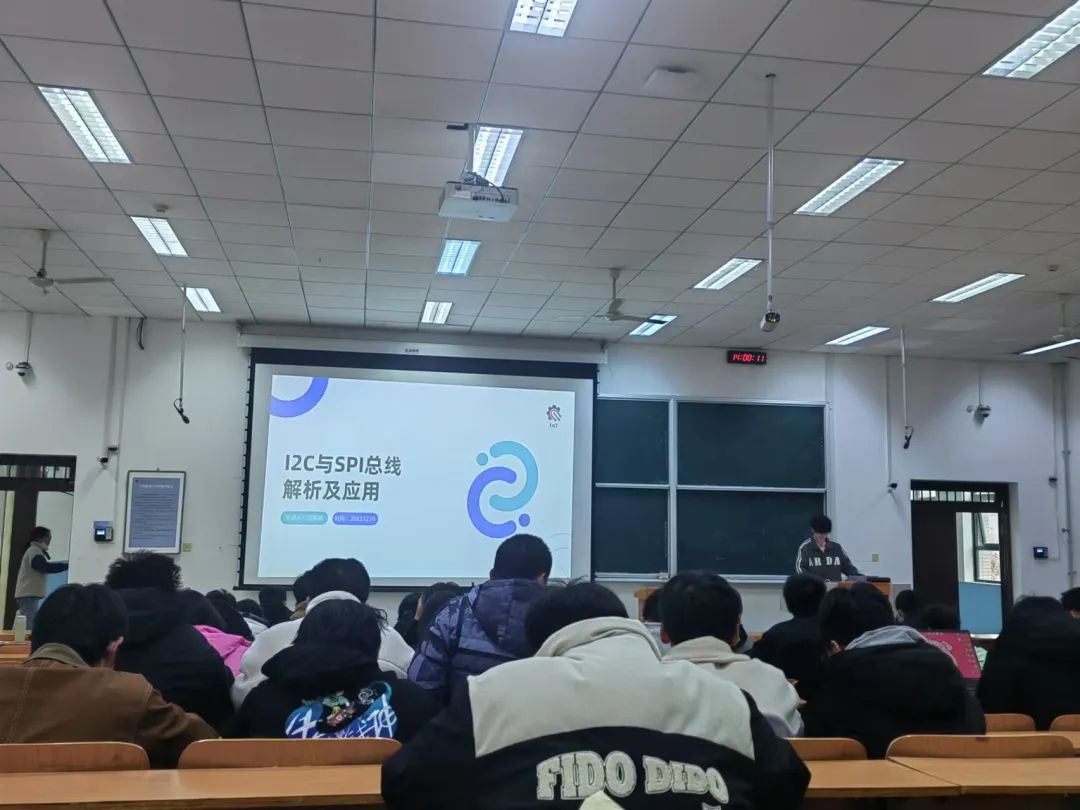
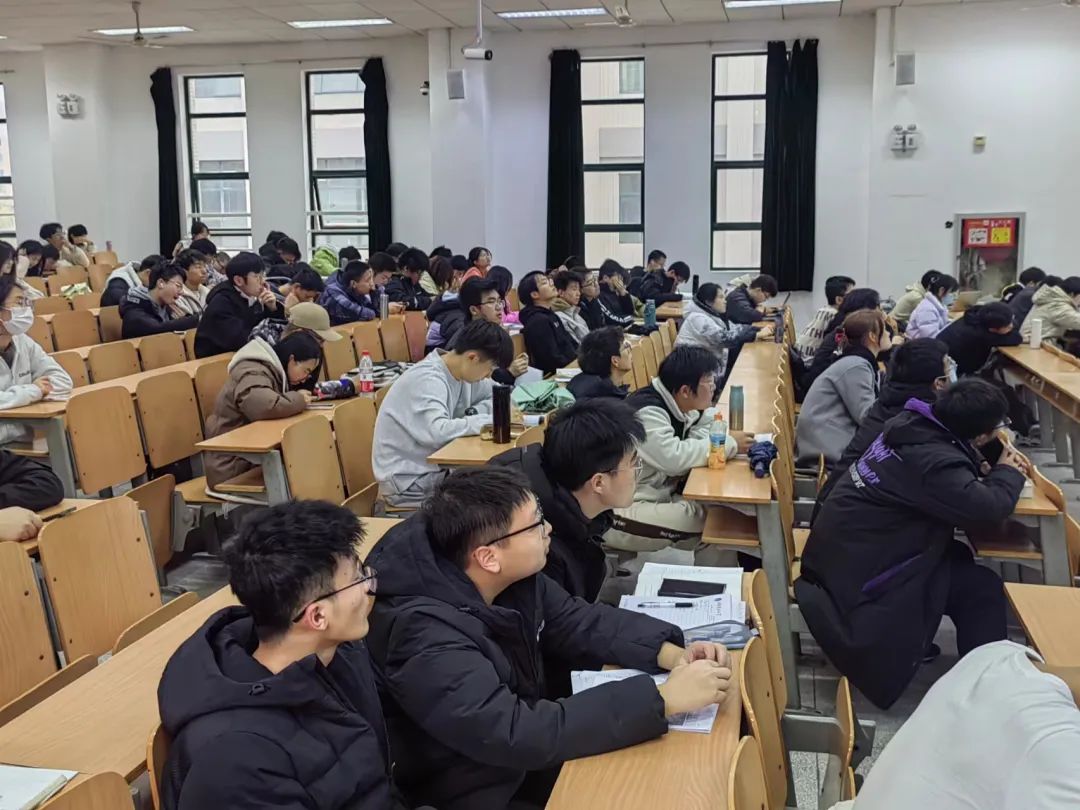
He Hanbing first introduced some basic knowledge about serial ports, and then explained I2C bus communication (IIC). He detailed the basic theoretical knowledge of I2C bus communication from aspects such as I2C communication connections, I2C communication data signals, I2C communication idle state, and I2C write/read data frame format.
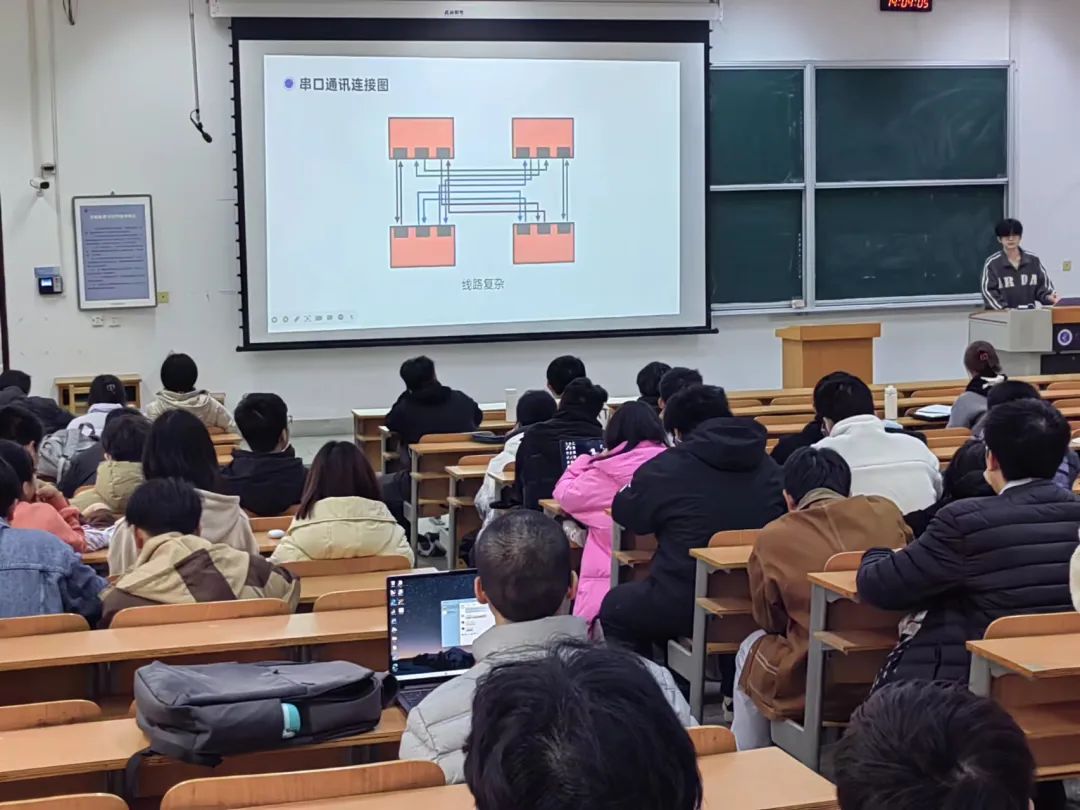
After understanding the basic knowledge, He Hanbing introduced the specific application of I2C communication by explaining an example of obtaining six-axis acceleration using STM32+MPU6050. He guided the students to configure the I2C communication IO ports step by step, using basic functions and application functions to write programs and apply MPU6050 for logical analysis.

Part.02
SPI Communication
KE CHUANG YANG FAN
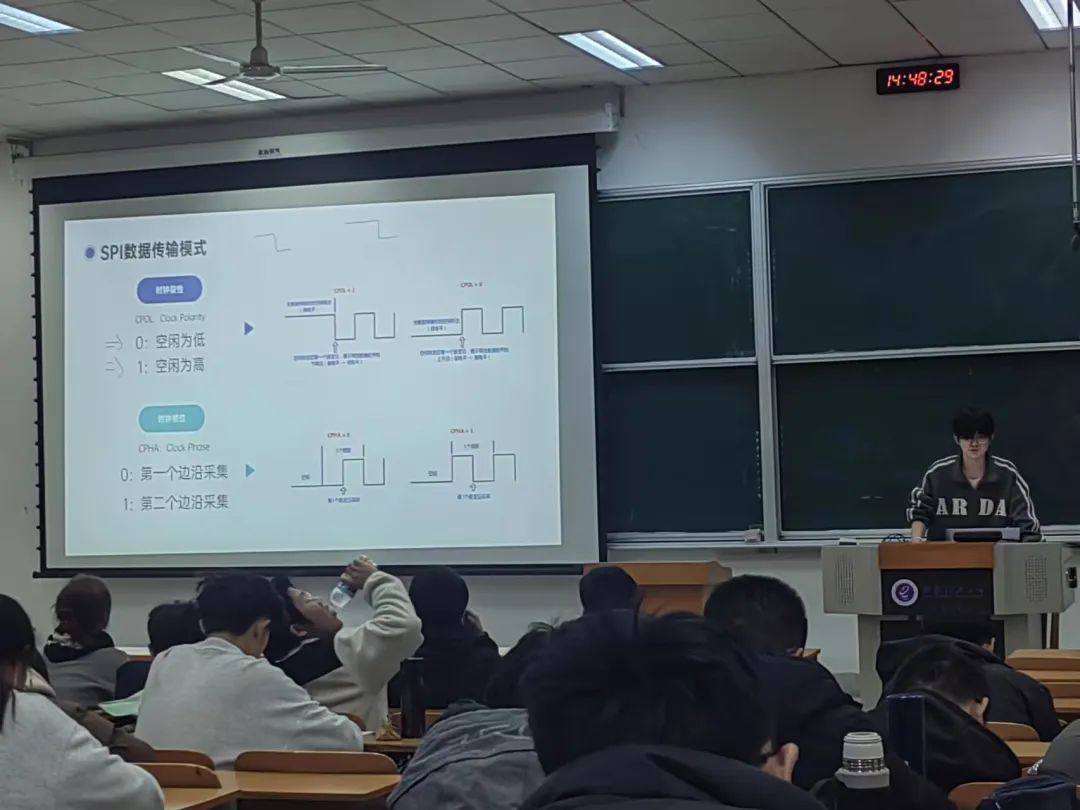
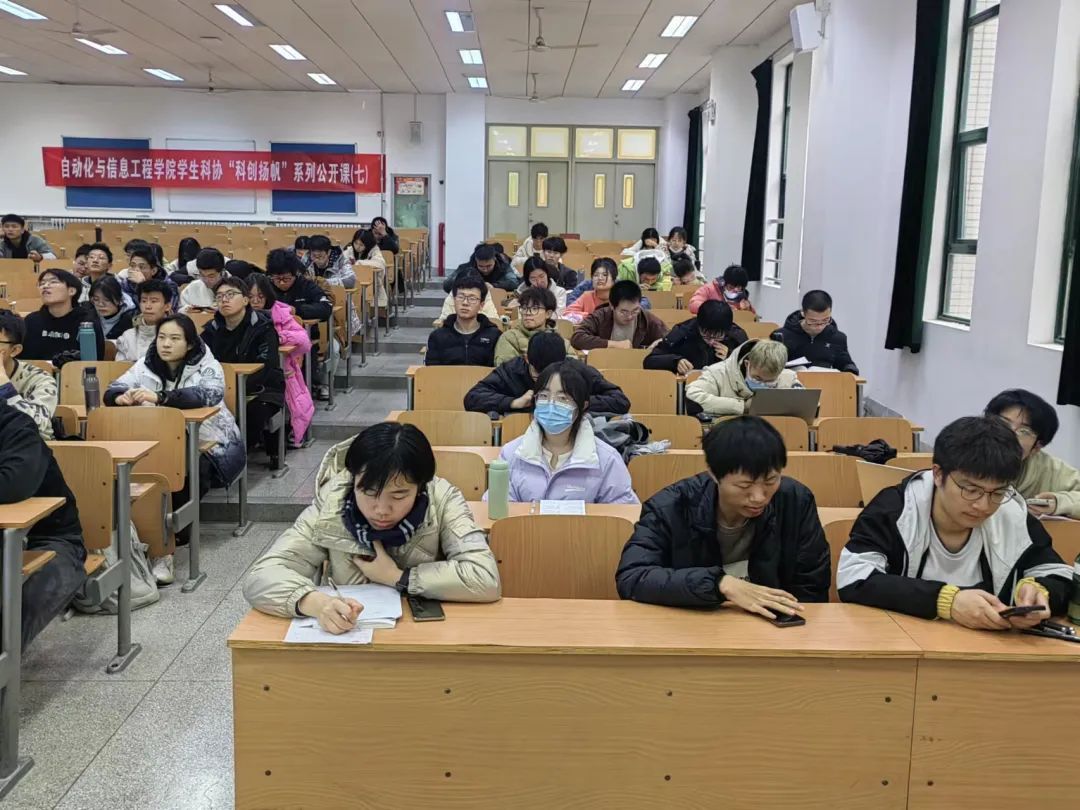
After explaining the I2C communication protocol, He Hanbing began to introduce another communication protocol——SPI communication protocol. Compared to the I2C protocol, the SPI protocol is simpler and has higher data transmission efficiency. Through his introduction, students gained a preliminary understanding of SPI communication connections, SPI data transmission, and collection.
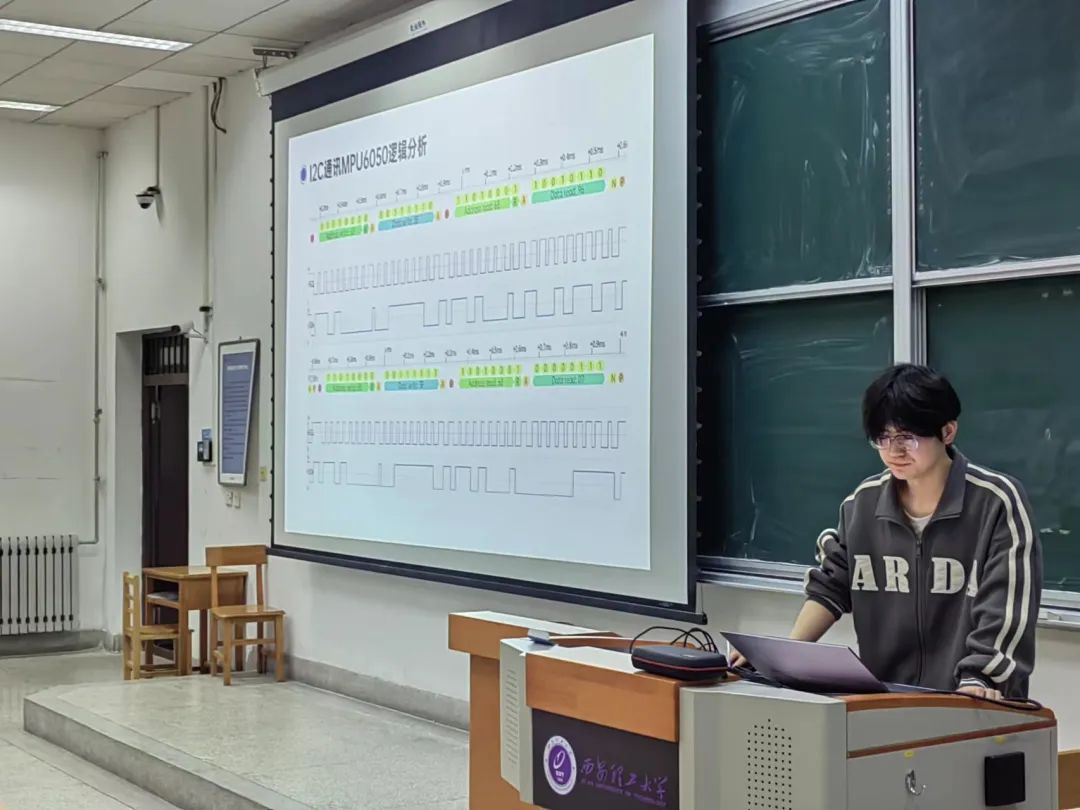
He then demonstrated the characteristics of SPI communication to the students: data must be sent in order to receive data. Finally, He Hanbing explained the basic functions and application functions of SPI communication while demonstrating operations and performed logical analysis on SPI.
Each public lecture by the Science Association is aimed at enabling students to understand and master some new knowledge, hoping that students will practice after the public lecture. “Without climbing high mountains, one cannot know how high the sky is.” It is hoped that every student will maintain their passion for competitions, ride the winds and waves, and forge ahead!

School of Automation and Information Engineering
Editor | Rong Haodi
Typesetting | Wang Chu, Tian Mengwen
Proofreading | Shi Yinan
Editor-in-charge | Fan Rong, Fu Borui
Review | Zhai Yuxiang, Lu Jiangtao